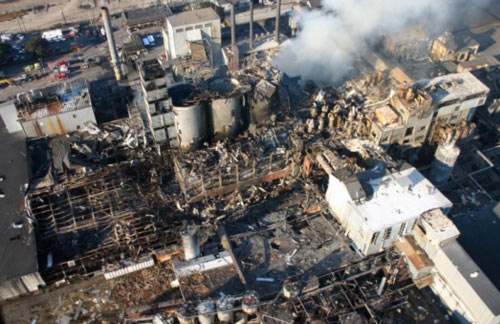Combustible Dust Safety
Combustible dust is finely ground organic or metal material that can cause an explosion or fire when suspended in air and exposed to a sufficient source of ignition. Combustible dust is any finely divided solid material that is 420 microns or smaller in diameter and presents a fire or explosions hazard when dispersed and ignited in air. A material need not generally be combustible in its original form to become combustible dust when broken down into fine enough particles. Materials such as sugar, flour, animal feed, plastics, paper, wood, rubber, furniture, textiles, pesticides, pharmaceuticals, paints and resins, dyes, coal, and metals can all create combustible dust.
Safeguards need to be activated to control the chances of a dust explosion. These safeguards are prevention, housekeeping dust control, eliminating fugitive dust (dust leaking from other sources), keeping the environment clean, and eliminating as many hazards as possible.

Dust Explosion in Massachusetts
Recognizing Dust Hazards:
-
Conduct general facility-wide appraisals of dust explosion possibilities on a periodic basis.
-
Conduct internal and external audits in order to identify potential explosion hazards.
-
Encourage a preventative attitude among employees for eliminating dust explosions.
- Have employees and supervisors identify explosion hazards through job hazard analyses (JHAs).
Dust Control Methods:
-
Vacuum areas where dust accumulation is constant due to the job task being performed
-
Wash down procedures where hoses and water can be used to remove accumulated dust.
-
Dust control systems such as filters or cyclones.
To avoid a scene, keep your workplace clean!
Download flyer: STOTW_Combustible Dust Safety.pdf (136.89 kb)

